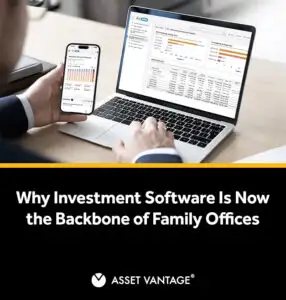Read Time4 Mins
Market volatility is a natural part of investing. While it can be unsettling to see your portfolio values fluctuate, it’s important to remember that market downturns are a normal part of the investment cycle.
Here are some tips for navigating market volatility and keeping your portfolio steady:
1.Have a long-term investment strategy
It’s important to have a long-term investment strategy that takes into account your investment goals, risk tolerance, and time horizon. A well-diversified Investment portfolio that includes a mix of stocks, bonds, and alternative assets can help to mitigate the impact of market volatility. By focusing on the long-term and staying disciplined, you can avoid making impulsive investment decisions based on short-term market fluctuations.
2.Keep your emotions in check
During times of market volatility, it’s easy to let emotions drive investment decisions. Fear and panic can lead to selling assets at the wrong time, which can lock in losses and hurt long-term performance. It’s important to keep a level head and not let emotions cloud your judgment. Sticking to your investment strategy and maintaining discipline during market downturns can be a key driver of long-term success.
3.Stay informed, but avoid reacting to every headline
The 24-hour news cycle can be overwhelming, and it’s important to stay informed about market conditions and economic trends. However, it’s equally important to avoid reacting to every headline or piece of news. Instead, focus on the underlying fundamentals of the economy and the companies you are invested in. Long-term trends are more important than short-term noise, so don’t let daily market movements distract you from your Investment Portfolio Management strategy.
4.Rebalance your portfolio
Market volatility can cause your portfolio to become unbalanced, with certain asset classes performing better or worse than others. Rebalancing your portfolio on a regular basis can help to maintain your target asset allocation and avoid taking on too much risk. By selling assets that have performed well and buying assets that have underperformed, you can stay on track to meet your long-term investment goals.
5.Consider alternative assets
Alternative assets, such as real estate, private equity, and hedge funds, can be a valuable addition to a well-diversified portfolio. These assets often have a low correlation with traditional stocks and bonds, which can help to reduce overall portfolio risk. Alternative assets can also provide opportunities for enhanced returns and downside protection during times of market volatility.
6.Seek professional advice
Finally, it’s important to seek professional advice when navigating market volatility. A financial advisor can provide guidance on your investment strategy, help you maintain discipline during market downturns, and provide a steady hand when emotions run high. A trusted advisor can also help you identify opportunities for growth and ensure that your portfolio is aligned with your long-term goals.
In conclusion, market volatility is a normal part of investing, and it’s important to have a long-term strategy in place that can withstand market fluctuations. By staying disciplined, keeping emotions in check, staying informed, rebalancing your portfolio, considering alternative assets, and seeking professional advice, you can navigate market volatility and keep your portfolio on track to meet your long-term investment goals. Remember that investing is a marathon, not a sprint, and that the key to success is to stay focused on the long-term and not let short-term market fluctuations derail your strategy.







